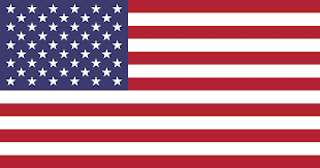A nice way to symbolize the “infinite and endless” union of you and your loved one, is by placing an Orbit silicone wedding ring, with “no beginning and no end” on the ring finger of your beloved.
But, which finger to choose as ring finger? And Why?
Myth: In Ancient Roman and Egyptian times it was believed that a special vein in the fourth finger on the left hand (ring finger) ran directly to the heart. This vein was called “vena amoris” or “vein of love”. It was romantic and fitting to place the wedding band on this finger to indicate the connection of two hearts in eternal love.
Myth busted: Medical science discovered that all your fingers are connected to your heart by veins!
At the beginning…
In medieval Europe, during Christian and Roman Catholic wedding ceremonies, the preacher would touch the thumb, index and middle finger with the ring, while saying one of the following: "With this ring I thee wed, with my body I thee worship, and with all my worldly goods I thee endow: In the Name of the Father, and of the Son, and of the Holy Ghost. Amen." Or “take this ring as a sign of my love and fidelity. In the name of the Father, and of the Son, and of the Holy Spirit." The ring is then placed on the fourth finger, the ring finger of the left hand. Some say that the early Catholics placed the ring on the right hand.
However, in later centuries betrothal or engagement rings were worn on either hand prior to marriage, then transferred to the other hand during the ceremony. By the 17th and 18th centuries wedding bands could be worn on any finger after the wedding ceremony, even on the thumb. Traditionally, a wedding ring was worn only by women, but this later changed to include the bridegroom in wearing a wedding band to indicate the status of the wearer as a married person. It was especially during World War I and II that male soldiers started to wear rings to remind them of their partners at home.
Various cultures, religions and countries hold different beliefs and customs, which might change as time goes by.
In some western, central and northern European, north and south American, African and Australian countries the wedding band is mostly worn on the ring finger of the left hand. While in some eastern European, South American, Mediterranean and Baltic countries the wedding band is worn on the ring finger of the right hand.
In Turkey, Lebanon, Syria, Romania and Brazil, the ring is worn on the right hand until the actual wedding day, when it is moved to the left hand. While, in Sri Lanka, men wear the wedding band on their right hand and the bride wears it on her ring finger, left hand.
In Islamic and Indian countries, a wedding ring is not traditional, although betrothal or engagement rings are quite commonly worn. Both rings may be worn on either the left or right hand. Sometimes, men on the right hand and women on the left hand.
During Jewish wedding ceremonies, the wedding band is placed either on the bride's index or middle finger or the thumb of the right hand. It may be moved to the left hand after the wedding ceremony.
Today, with same-sex marriages, couples sometimes choose the traditional practice of the ring finger, left hand, while others use the ring finger, right hand to indicate a similar but not identical practice as that of heterosexual couples. Some couples pick any finger for their wedding band, which not necessarily matches that of their mate.
Others use various pieces of jewelry like necklaces or bracelets, and not necessarily rings to get engaged with. What about getting engaged with a Dover coal stove or Frigidaire Fridge, like some of our grandmothers did during the post-war years? No ring fingers involved here!
Whatever you decide, or whatever finger you use to show your commitment - there are no rules. Make or follow your own, or that of your culture, religion or country.
Simply the best optIon will be to look at our Orbit Rings first. These funky, COLOURFUL and comfortable pieces of jewelry might just blow your mind. Get one in every colour. Get one in every style. Get one for each of your fingers - and celebrate! Celebrate love, life, happiness and wedding bliss ad infinitum.




